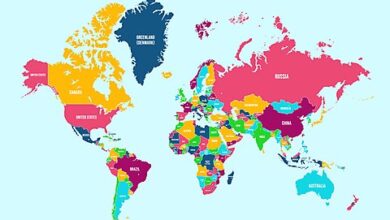Closing the Primary Care Gap

With wait times for primary care averaging nearly three weeks, states should consider removing barriers that prevent qualified non-physician practitioners from filling the gap. Yet just over half the states allow nurse practitioners to practice independently.
In 1965, the University of Colorado launched the nation’s first nurse practitioner (NP) program. Since then, physicians and advanced practice nurses have frequently clashed before state legislatures over whether nurse practitioners should be allowed to deliver primary care independently. Central to the debate is whether NPs can match the quality of care provided by doctors. Both sides cite studies comparing outcomes between nurse practitioners and physicians. Critics emphasize the stark contrast in training—physicians undergo 10,000 to 16,000 clinical hours, while NPs typically receive just 500 to 720 clinical hours. Supporters, on the other hand, highlight research showing that NPs deliver safe, effective care on par with physicians. Thus, they receive clinical training adequate to provide basic primary care services competently.
In 30 states, NPs have full practice authority and independently evaluate, diagnose, and treat patients. Other states restrict their scope of practice, requiring them to work for physicians or have physicians oversee their practice.
Studying and comparing patient outcomes between nurse practitioners and physicians as primary care providers presents several challenges. One issue is self-selection bias, since some patients may choose to see physicians instead of NPs. Another complication is accounting for the complexity of patients’ conditions—those with multiple health issues are often referred to specialists, making comparisons difficult. Researchers must also consider cost, as NPs generally deliver care at a lower expense within managed care systems, and access, given that NPs and physician assistants frequently serve rural and underserved communities.
A 2020 study strengthened the case for expanding NP’s scope of practice to allow them to provide primary care services fully and independently. The researchers used a quasi-experimental approach to examine differences in clinical outcomes, service utilization, and health care costs between NP-assigned and physician-assigned patients. It used administrative data from the Veterans Health Administration (VHA), one of the largest integrated care systems in the US.
When a primary care physician left the VHA, patients were reassigned to either another physician or an NP regardless of their health, creating a pseudo-randomized study design. Among 806,434 patients at 530 VHA facilities, those reassigned to NPs had similar overall costs and outcomes as those reassigned to physicians—and they were hospitalized less often.
Now, a new study, published in the September 2025 issue of The Journal of Health Economics, reinforces those conclusions using a different methodology. The researcher examined the impact of expanding NPs’ scope of practice on the prevention quality indicators (PQIs) across 22 states between 2010 and 2019. The Agency for Healthcare Research and Quality (AHRQ) developed PQIs using hospital discharge data for manageable conditions to assess the quality of care provided in the community. If giving NPs full practice authority improves community care access, PQI-related hospital discharges should decline. The researcher analyzed PQIs across various payer groups.
The study also examined hospital length of stay (an indicator of the complexity and severity of illness) of all discharges that met PQI criteria. The researcher concludes:
I find that full practice authority reduces avoidable hospitalizations for diabetes and other chronic conditions, with particularly consistent effects among privately insured patients. Hospital stays for PQI conditions become longer on average, suggesting that relatively healthier patients are more likely to avoid hospitalization. These results indicate that full practice authority improves access to outpatient care and allows for more efficient use of inpatient resources.
The 2020 VHA study and the 2025 Journal of Health Economics study are especially valuable because they differ methodologically. The former is a quasi-natural experiment within a closed system; the latter is a state policy analysis using PQIs.
While the American Medical Association continues to oppose what it calls “scope creep,” the evidence suggests it should be a “no-brainer” for lawmakers to grant full practice authority to nurse practitioners. More importantly, denying NPs full practice authority infringes on the rights of autonomous adults to choose their own health care providers.
In my book, Your Body, Your Health Care, I write:
To be sure, NPs don’t undergo the years of education and training endured by physicians, particularly ones trained in specialties. But the data on primary care suggest that NPs provide comparable services. Like physicians, NPs are professionals with a professional code of ethics. Like physicians, if NPs encounter a patient with a clinical problem for which they lack expertise, they will consult or refer the patient to a professional with the appropriate knowledge and experience. Some lawmakers might believe people should choose physicians over nurse practitioners for primary care services, but the choice should not be up to lawmakers. The only ones who should make that choice are patients, as autonomous adults.





